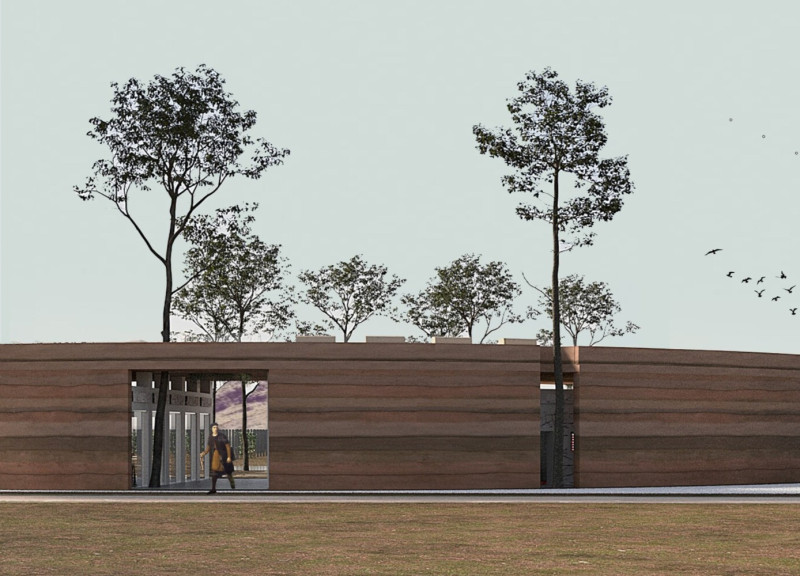5 key facts about this project
The Tilli Vinehouses project is located in the Perugia region, an area facing significant environmental challenges, particularly due to drought. This design aims to create a connection between the buildings and the surrounding landscape, emphasizing sustainability and practicality. The concept focuses on balancing natural elements with the needs of the residents, while also employing strategies that reduce energy use and encourage a sustainable way of living.
Design Concept
At the heart of the design are four key elements necessary for growing organic vines: earth, water, sunshine, and people. These elements are integrated into the structure, demonstrating a commitment to organic principles in a modern context. The use of rammed earth connects the buildings to the soil, while recycled bricks from an old house illustrate the importance of reusing materials. This thoughtful approach promotes environmental responsibility.
Water Management
Water management is a vital aspect of the design. A rainwater collection system gathers water from the roof and stores it in a tank. This collected water can be used for growing vegetables on the rooftop garden. This method supports water conservation efforts and promotes local food production. It also strengthens the connection between residents and their environment.
Spatial Arrangement
The layout of the spaces within the development balances private and shared areas. Communal features include gardens, a swimming pool, and a fire pit, which encourage interaction among residents. Additionally, a restaurant is located at the entrance to serve both residents and visitors, highlighting the community-oriented nature of the design.
Architectural Details
The design incorporates specific elements that respond to the local climate. To minimize direct sunlight, a secondary roof structure has strategic openings made with vine barrels. This allows light and air to enter the living spaces while reducing the dependence on cooling systems. The overall form of the buildings creates a visual link with the surrounding vineyards and hills, resulting in an approachable design that fits well within its context.






















































